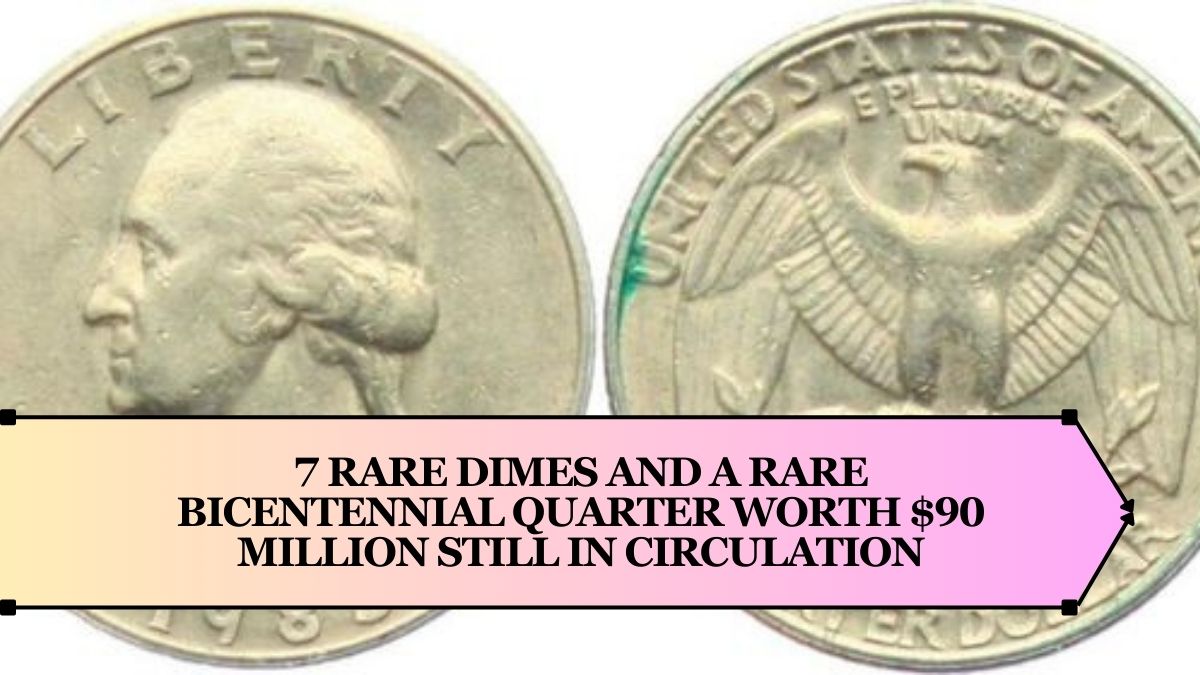Imagine finding a coin worth $90 million just by looking at your pocket change! Some rare dimes and a Bicentennial quarter, still in circulation today, are highly valuable due to their scarcity and special features. These coins are not just collectibles; they can change the life of anyone who finds them. In this article, we’ll explore seven rare dimes and one rare quarter that could make you incredibly rich.
1894-S Barber Dime
The 1894-S Barber Dime is one of the rarest U.S. coins, with only 24 ever minted. Today, fewer than ten of these coins are known to exist, making it extremely valuable. This dime has become a holy grail for collectors, and some have been sold for millions of dollars.
1916-D Mercury Dime
Another highly sought-after coin is the 1916-D Mercury Dime. With just around 264,000 of these dimes ever made, their rarity and historical significance make them very valuable. Mint-condition coins can fetch large amounts, and collectors are always looking for this rare dime.
1975 No-S Roosevelt Dime
The 1975 No-S Roosevelt Dime is a result of a minting error. Unlike most coins, it doesn’t have the “S” mint mark, which should be present for coins minted in San Francisco. This mistake makes it a rare find, and in excellent condition, it can be worth a significant amount.
1968 No-S Proof Roosevelt Dime
Just like the 1975 No-S dime, the 1968 No-S Proof Roosevelt Dime is missing the mint mark, which was supposed to identify the San Francisco mint. This rare error coin is valuable because of its uniqueness and its place in mint history.
1942/1 Mercury Dime
The 1942/1 Mercury Dime is famous for its overdate error. The number “1” from 1941 is visible under the “2” in the date. This unique feature makes it highly collectible, and in good condition, this dime can be worth millions.
1982 No-Mintmark Roosevelt Dime
The 1982 No-Mintmark Roosevelt Dime is valuable because it lacks any mint mark, unlike other dimes from the Philadelphia Mint. This error coin is rare and considered highly desirable among collectors.
1873-CC Seated Liberty Dime
The 1873-CC Seated Liberty Dime is rare due to its low mintage and special design. It was minted at the Carson City Mint and features arrows on the design. This coin is particularly valuable among collectors because of its historical importance and scarcity.
The Bicentennial Quarter
Released in 1976, the Bicentennial Quarter was issued to mark America’s 200th anniversary. The quarter features a design of a colonial drummer on its reverse side. While most of these coins are common, certain mint errors or rare conditions make a few extremely valuable. Some are even rumored to be worth millions of dollars due to rare minting mistakes.
Conclusion
These rare dimes and the Bicentennial Quarter show how everyday coins can have immense value due to unique minting errors or historical significance. Whether you’re a coin collector or just someone who loves to look through their change, these coins are a reminder that fortune can be hiding in the most unexpected places. The rarity of these coins makes them highly desirable in the collector market, and finding one can bring a life-changing windfall.
FAQ’s
What makes the 1894-S Barber Dime so valuable?
The 1894-S Barber Dime is incredibly rare, with fewer than ten known to exist, making it worth millions due to its low mintage and historical significance.
Why is the 1916-D Mercury Dime so sought after?
The 1916-D Mercury Dime is valuable because only around 264,000 were made, making it a rare find that collectors prize for its scarcity.
What is a “No-S” Roosevelt Dime?
No-S” Roosevelt Dime lacks the “S” mint mark, which makes it a rare error coin, especially for 1975 and 1968 issues, adding to its value.
Are Bicentennial Quarters worth millions?
Most Bicentennial Quarters are common, but those with rare mint errors or special conditions can be worth millions to collectors.
How do minting errors increase a coin’s value?
Minting errors, like missing mint marks or overdates, create unique variations of coins, which makes them rare and more valuable to collectors.

